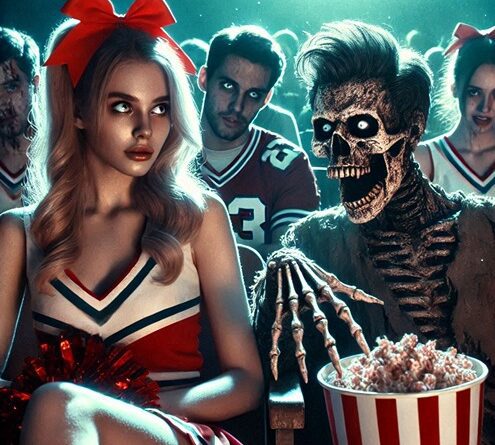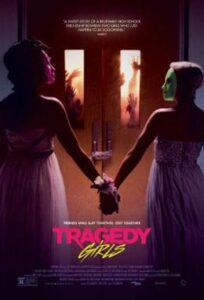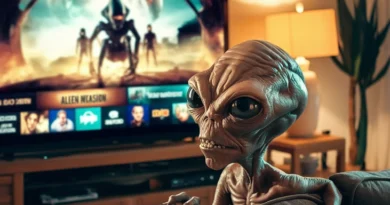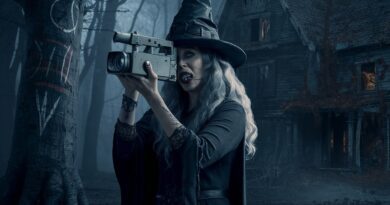Say Cheers And Die: The Appeal Of Scary Cheerleader Movies
Suppose there was a dictionary somewhere that classified horror film subgenres according to the viewing experience. In that case, it’s very possible that the term cheerleader movies would appear under the “Guilty Pleasure” category, at least for me. After all, the movies offer, in part, everything we’re looking for in a non-binding late-night viewing: bloody murders (a large portion of the movies are slashers), an attractive cast, music, humor, reflexivity, and so on. Indeed, you usually won’t find masterpieces here, but similar to the babysitting movies we’ve already reviewed on the site, these movies can provide us with some pleasure.
Why Should You Watch Horror Cheerleader Movies?
Horror movies about cheerleaders, and cheerleader movies in general, combine several advantages. Horror films from this subgenre, which got the unofficial nickname “Pom Pom Horror,” often operate on contrasts. In this case, there is a contrast between the cheerleader character – frequently sexy, admired, and cheered on by men – and the cruel fate that awaits her. Although cheerleaders can symbolize beauty and energy, among other things, in horror films, everything takes on a twist.
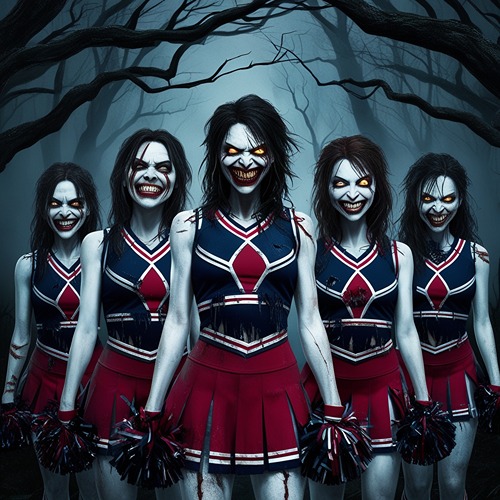
It’s hard to take cheerleader films seriously, which means that many horror films about cheerleaders are funny, whether we laugh at the movies or at them. Most films take place in high school and fall into the definition of a teenage comedy. We can expect a nonsensical slasher or a supernatural drama and less complex psychological horror films. Cheerleader films are suitable for casual viewing or hanging out with friends; sometimes, that’s exactly what we want.
Of course, we cannot ignore the visual aspect of cheerleaders films. The character of cheerleaders is considered sexy by definition: Usually, the cast includes young, well-built, and carved actresses with impressive physical characteristics. In fact, without conducting empirical research, we can assume that cheerleaders are the wet dream of many men, with attractive women in a masculine environment, such as a football field, completing the fantasy.
Of course, some will criticize these choices, claiming that the films objectify (mainly) women. In my opinion, from watching quite a few cheerleading films, in most of them, the “objectification” is within the reasonable range (I am not referring, of course, to shallow films or softcore porn films disguised as feature films). This, of course, cannot be said for films from other genres that turned the image of the cheerleader into a sex symbol, such as “Debbie Does Dallas” from 1978, starring a porn actress named Bambi Woods, which is considered one of the most successful porn films of all time.
We can get the visual experience of watching cheerleading films by dancing, even for those for whom every dance in real life is a horror film (oops!). These films also have music that often corresponds with the world of youth or the nostalgia accompanying us, such as rhythmic and silly songs from the 90s.
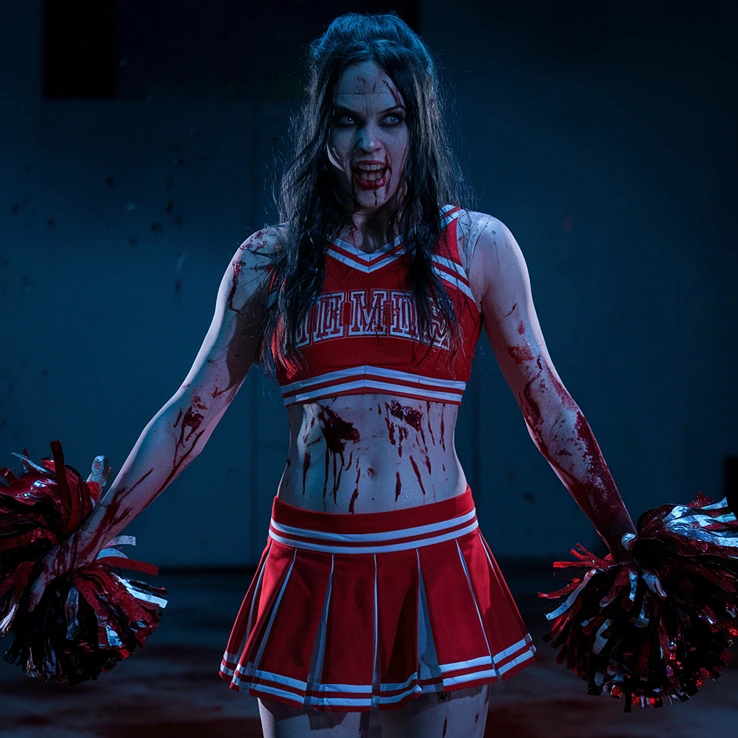
The Appeal Of Scary Cheerleader Movies
If we analyze cheerleading films more deeply, we can understand their potential for guilty pleasure, or even the fact that sometimes there is more to them than meets the eye. Horror films like to incorporate social criticism into them, which in this case refers mainly to the cheerleader character and what happens to her. Traditionally, cheerleaders are a symbol of perfection: casting shows that, in most cases, they represent a stereotype of the ideal of beauty, and from a social point of view, they are admired figures. In horror films, however, these characters are exposed to threats and hazards, which show that not all blondes are happy.
Some horror films use the cheerleader character in a satirical way, partly to point out the hypocrisy or social pressure accompanying this character, that is, the gap between the social ideal and the actual situation. This argument can be relevant when films present cheerleaders as victims but also when they reveal their violent and murderous side, as we will see in some of the horror films we will discuss later.
Fangoria pointed out another interesting reason related to the viewer’s experience of scary cheerleader movies. Although cheerleaders exist in different age groups, we usually attribute them to the high school period. The viewer who sees the cheerleaders in tight clothes may feel a certain guilt because this is a character who is depicted as a girl or woman slightly older than that (even if, in reality, she could be in her 30s or 40s, as we have seen more than once). Instead of the viewer wondering why he is excited by “young” women, the films help him redirect this anxiety and turn it into a desire to see the cheerleaders suffer.
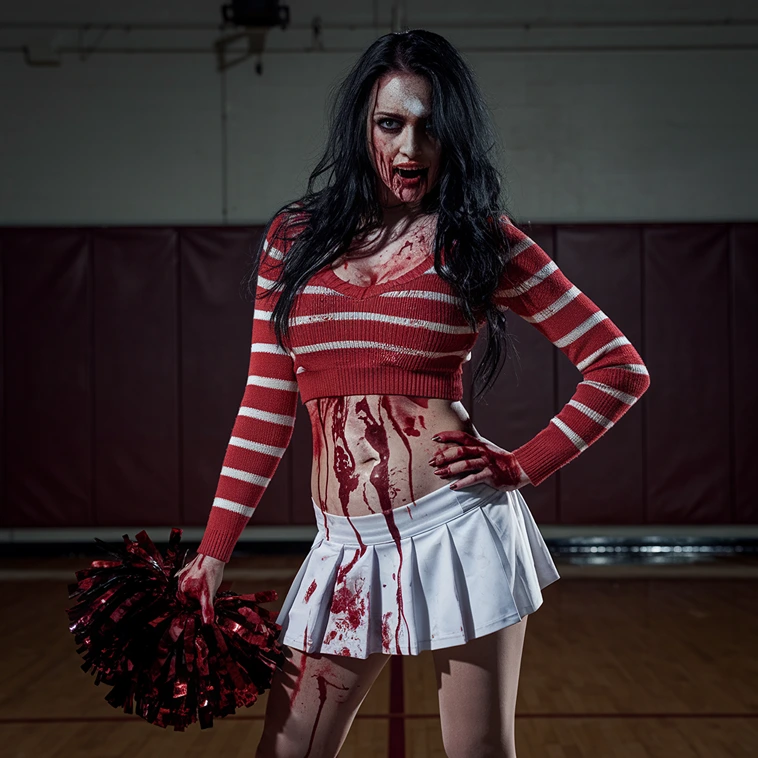
Cheerleader Movies Can Be Hit
In the world of horror, we often operate according to economic formulas. In this context, it may very well be that the impressive success of the first “Bring It On” from 2000, which grossed over $90 million (against a tiny budget of about $11 million), explained why we saw no fewer than six sequels. Although they only reached home viewing, they still gained a loyal audience.
Of course, we are particularly interested in the latest film in the franchise, “Bring It On: Cheer or Die,” which turned the familiar cheerleading story into a slasher horror, which will star in our review later. The fact that cheerleading movies or other cheerleading characters have become cult classics (the obvious example is “Jennifer’s Body”), along with the wave of nostalgia that explains why silly 80s-style movies are being made these days, are other possible reasons.
The cheerleader character itself became popular as well. We can see a wide range of cheerleader costumes, including scary cheerleader costumes.
Which Horror Cheerleader Movies Are There?
Satan’s Cheerleaders (1977)
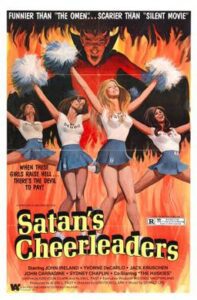
“Satan’s Cheerleaders” is considered by many to be the first, or at least the most significant, cheerleading slasher. The horror comedy from one of the horror wizards of the 70s and beyond, Greydon Clark, is about a group of high school cheerleaders traveling on a bus to a match.
The problem is that the tough women, who the technician has secretly watched for some time, are unaware that the school’s security guard is trying to do terrible things to them, which involve sacrificing a virgin (sound familiar?). The devil doesn’t know that cheerleaders are not as innocent as it may seem, especially since one is a witch.
Cheerleader Camp (1988)
We continue with the very cheerful 80s for horror fans, with a film representing the spirit of slashers of that era: excessive murders, blood, sex, nudity, and other elements that have somewhat disappeared from modern slashers, sadly.
“Cheerleader Camp,” which was reportedly titled initially “Bloody Pom Poms,” follows a cheerleader named Allison (Betsy Russell, who we now know best as Jill from the “Saw” films) who arrives at the summer camp. Allison, the other cheerleaders, and the rest of the camp participants (including Allison’s boyfriend, whose fantasy is to sleep with several other cheerleaders) soon become the victims of a mysterious killer. No one knows who is the killer, and they may have blamed the wrong person.
Jennifer’s Body (2009)
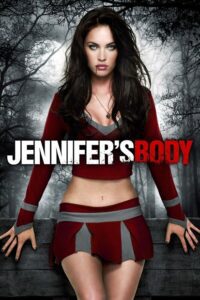
It’s hard to call “Jennifer’s Body” a cheerleading movie if you can even categorize this cult film as a genre. Karyn Kusama’s excellent horror comedy, based on a script by Diablo Cody (“Juno,” “Lisa Frankenstein”), features Megan Fox in all her glory, playing a sexy cheerleader named Jennifer Check, whose best friend “Needy” (a nerdy-looking Amanda Seyfried) is the complete opposite. The two attend a rock concert, where the members of the band are part of some satanic cult that wants to sacrifice a virgin to the devil in exchange for fame, fortune, and a high spot on the Billboard charts. The problem is that Jennifer has already lost her virginity, so the ritual goes wrong. Jennifer turns into a man-eating monster – essentially, the mythical figure of the Succubus.
So it’s true that the fact that Jennifer is a cheerleader could perhaps explain the status she receives or even her sexual experience, so this fact is relevant to the plot. Still, we included “Jennifer’s Body” in our review mainly because of Fox’s iconic look in the cheerleading outfit, which also starred in the film’s posters and became a costume among horror fans. Although the film wasn’t very successful in real life, it was defined as a cult film and turned Megan Fox into a horror icon, who also happens to be the wet dream of many men. This may be the reason why the film failed at the box office, with only later on people understand all its feminist messages about the dehumanization of a girl who becomes an object and an “object” just because of her appearance.
Spirit Camp (2009)
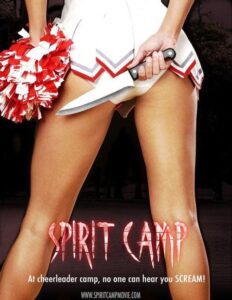
Rough estimate: A significant percentage of the hundreds of IMDB raters of “Spirit Camp” chose to watch it because the poster shows the backside of someone who looks like a cheerleader holding a knife in one hand and a pom-pom in the other. The film was written and directed by the relatively unknown Kerry Beyer, and it reminds me of B-Movie in every aspect.
The “Spirit Camp” heroine is a goth girl (Roxy Vandiver, whose brief horror career in the 2000s wasn’t enough to earn her a picture on IMDB) who has committed several offenses. The solution the authorities suggest to her, for some reason, is to rehabilitate her at a cheerleading camp with girls who are probably the complete opposite of her. You may have guessed correctly that the low-budget film turns into a slasher, with a killer who attacks the so-called friends.
Is the killer a cheerleader holding a knife behind her back, near her chiseled buttocks, as the poster suggests? We haven’t seen the film yet to tell you.
All Cheerleaders Die (2013)
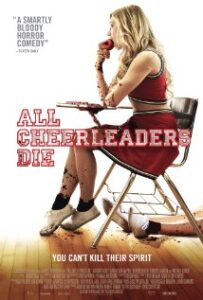
“All Cheerleaders Die” is a likable horror comedy that started in 2011 as a low-budget film of the same name. The film was directed and written by Lucky McKee (best known for the 2002 cult film “May” and other solid horror films, such as 2011’s “The Woman” and 2022’s “Old Man”) and Chris Sivertson (the terrible “I Know Who Killed Me” with Lindsay Lohan, and the much more explanatory “Monstrous” starring Christina Ricci), and almost no one has seen it.
In 2013, the two made a remake, which has already gained much more interest among horror fans. Our heroine is a cheerleader named Maddy (Caitlin Stasey, who has appeared in several horror films such as 2013’s “Evidence” or the terrible “I, Frankenstein” with Aaron Eckhart, but is best known as the girl with the creepy smile from the excellent opening scene of the first “Smile,” as well as the short film on which “Smile” is based). Our Maddy joins the cheerleading squad to get revenge on someone for something we later learn, which may be related to a dead cheerleader. But then things start to go wrong, and there’s also a supernatural twist, which includes mass killings, cheerleaders who are resurrected with magic, body swapping, and a craving for human blood.
Tragedy Girls (2017)
Personally, I really couldn’t stand “Tragedy Girls”. The concept seems super cool to me, about two good friends (Alexandra Shipp from the “X-Men” movies and Brianna Hildebrand from the “Deadpool” movies) – who are also cheerleaders – who run a blog about true crimes. The girls are obsessed with death, murder, and stalking. When they manage to catch a serial killer, they go viral and realize that the best way to get followers is to murder people and blame the serial killer for it.
“Tragedy Girls” is a movie with the potential of becoming a pure guilty pleasure, especially since it combines social media and exposure themes, which I also connect with in horror movies. There are comedic flashes and a few solid scenes, such as the murder of the cheerleading squad captain. However, I found the movie oppressive and messy, and I had a hard time connecting with it because the heroines were – sorry in advance – unbearable, and not in a good way.
Deinfluencer (2022)
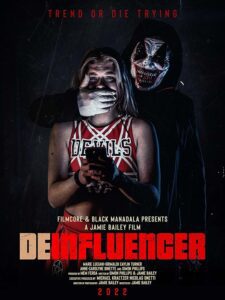
The idea of This movie sounds so silly and fun, so it’s a shame (or isn’t it?) that it got such terrible reviews. “Deinfluencer” also deals with the popularity and virality of successful and beautiful women like cheerleaders, showing the opposing sides of online exposure. A masked maniac kidnaps Kelly (Marie Luciani Grimaldi, in her first film role). He forces her through extreme social media challenges to get more followers. Of course, at some point, the challenges will be murderous for her or her friends.
The director of “Deinfluencer” is Jamie Bailey, who is responsible for that “Mickey’s Mousetrap” nonsense we wrote about on the site not long ago. One of the script’s writers, along with Bailey, is Simon Phillips, a not-so-bad actor who also played (sort of) Mickey in that infamous movie.
Bring It On: Cheer Or Die (2022)
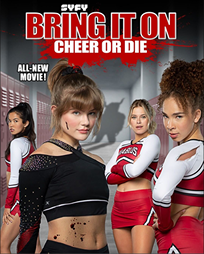
We’re wrapping up the final installment of the Cheerleaders franchise, which took the franchise in a completely different direction. “Bring it on: Cheer or Die” begins with a scene that echoes the opening dances of the previous films, except this time it ends in disaster. Twenty years later, the high school that survived the trauma still refuses to do dangerous stunts. Cheerleader captain Abby (Kerry Medders, “SEAL Team,” “Do Not Reply”) is determined to practice anyway, and the team finds itself practicing in an abandoned school on Halloween night. The problem is that someone disguised as the team’s mascot starts murdering them.
In many ways, “Bring It On: Cheer or Die” is a horrible movie. The script is problematic, the direction is sometimes annoying (too many slow motions), the acting is mediocre at times, and the horror is minimal (the film is rated PG-13). The killer’s or killers’ identity, as we discover in a twist at the end, is quite annoying and not very believable. On the other hand, there are some amusing moments here, especially since it’s always fun to see attractive cheerleaders impaled to death by an arrow, or whatever happens there.
From Buffy To Sidney: Famous Cheerleader Characters
Of course, the entire film doesn’t have to be about cheerleaders to create some beloved characters who also know how to dance with pom-poms.
Perhaps the most recognizable character in this context is Buffy, hereinafter “Buffy the Vampire Slayer,” who was first played by Kristy Swanson in the 1992 film. Buffy (in the film without the last name Summers) is a pretty ordinary high school student who also serves as a cheerleader. One day, she discovers she is a “vampire hunter” whose job is to protect her friends from a long line of terrifying creatures. Of course, the film was the basis for the super successful series “Buffy the Vampire Slayer,” in which Sarah Michelle Gellar took on the role that established her as a horror icon in the 90s and 2000s. So it’s true that Buffy is a cheerleader, and so are other supporting characters in the series (like Chrisma Carpenter as Cordelia). Still, it’s hard to call “Buffy the Vampire Slayer” a “cheerleader movie” in the complete sense.
There is no shortage of other cheerleaders who have attracted positive attention, some of whom have become iconic:
The excellent scream queen Mary Elizabeth Winstead (who has done many horror films, such as “Final Destination 3”, “Black Christmas,” “Abraham Lincoln: Vampire Hunter,” “10 Cloverfield Lacne”, “The Thing” and more) in Quentin Tarantino’s excellent “Death Proof“
![]() The super-curvy Nina Dobrev in “The Vampire Diaries”
The super-curvy Nina Dobrev in “The Vampire Diaries”
![]() Christy Cunningham in “Stranger Things”
Christy Cunningham in “Stranger Things”
![]() Hayden Panettiere in “Heroes”
Hayden Panettiere in “Heroes”
![]() A very large number of characters in “Glee,” such as Quinn (Dianna Agron), Santana (Naya Rivera), Brittany (Heather Morris) and more
A very large number of characters in “Glee,” such as Quinn (Dianna Agron), Santana (Naya Rivera), Brittany (Heather Morris) and more
![]() Sidney Olsen (Olivia Newton-John) and “Patty” Simcox (Susan Buckner) in “Grease”
Sidney Olsen (Olivia Newton-John) and “Patty” Simcox (Susan Buckner) in “Grease”
So what’s The bottom line? Well, cheerleading movies can continue to be the movies that it’s embarrassing to admit we like, or rather: express everything we’re looking for in the definition of a no-strings-attached guilty pleasure. I’ll continue to jump up and cheer for any such movie.
Some of the links on this site are affiliate links. That means if you purchase through them, we might earn a small commission. But don’t worry... it won’t cost you extra, and it probably won’t summon anything...
So if you’re thinking of buying something… don’t be afraid to click! 🔪👁️

